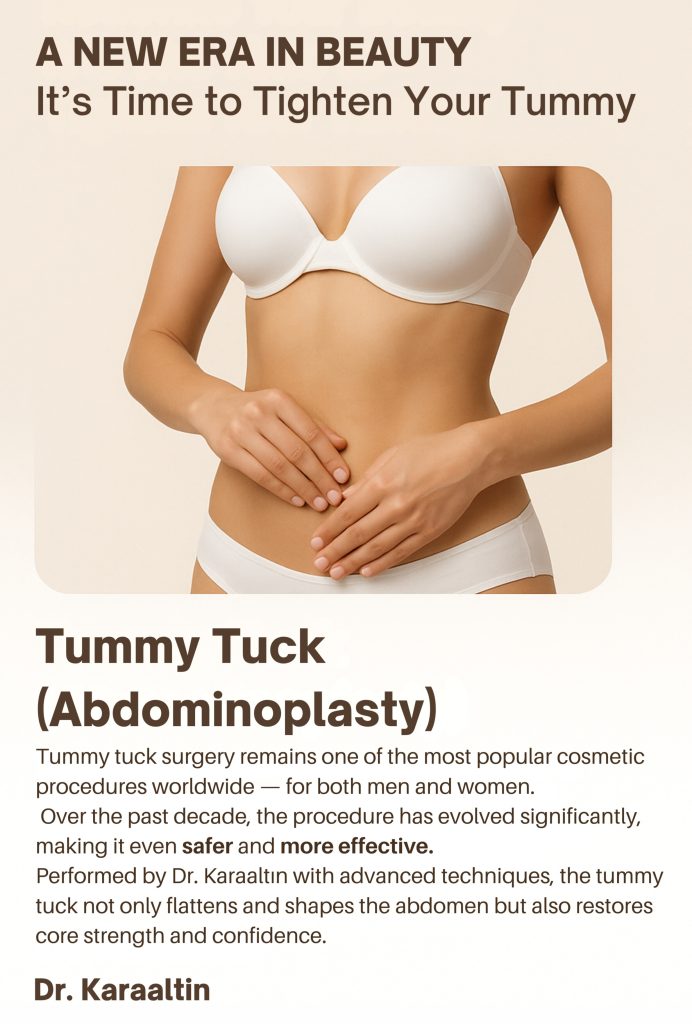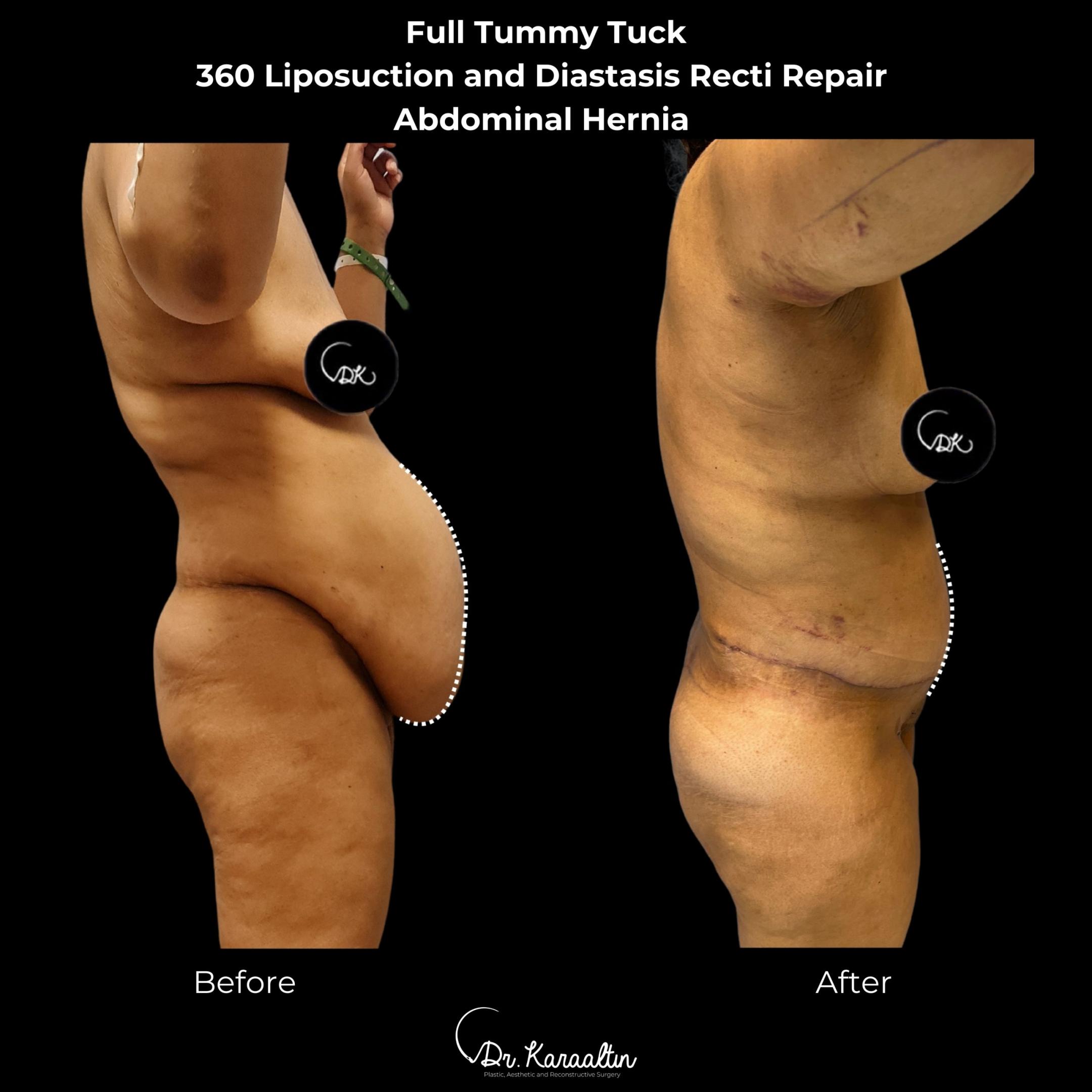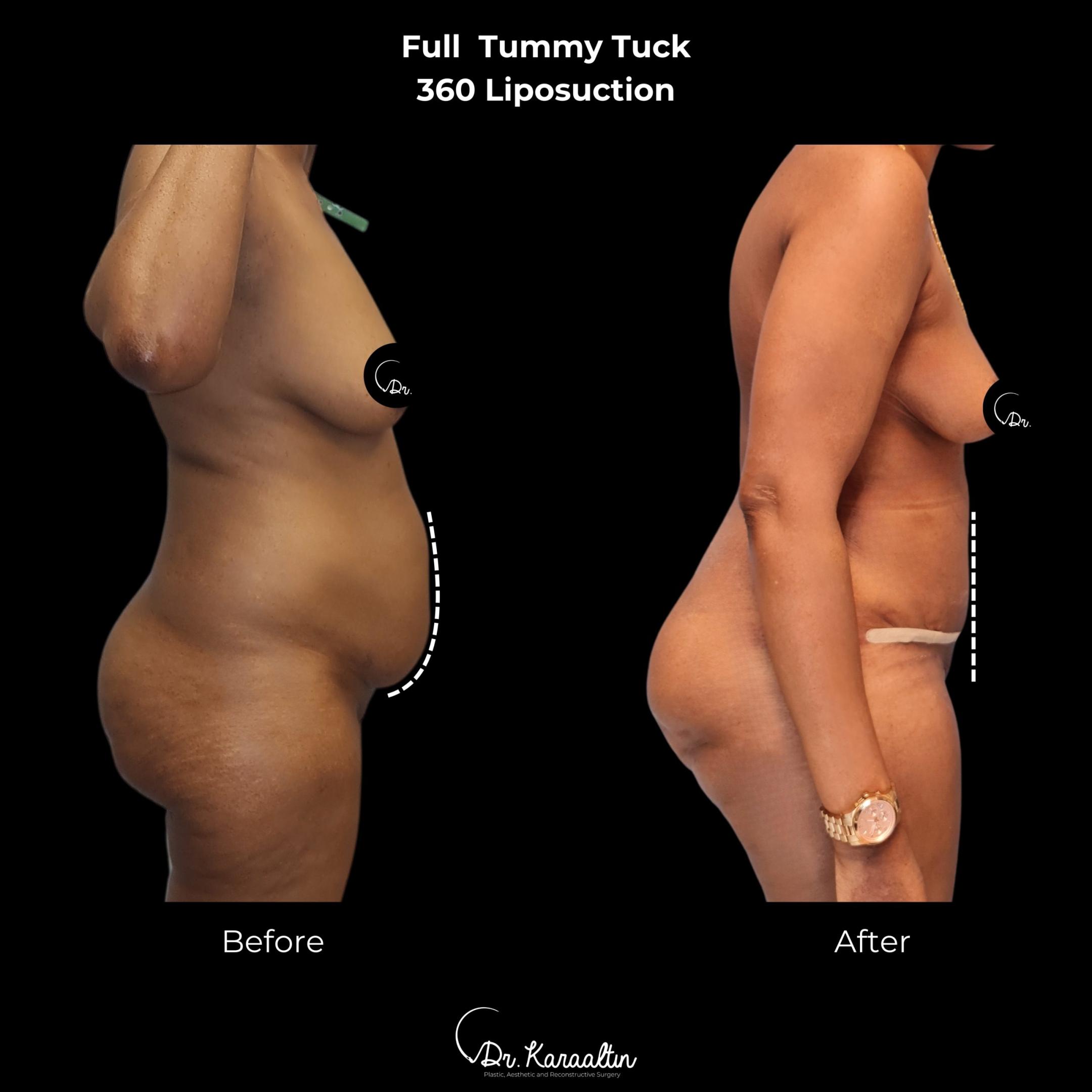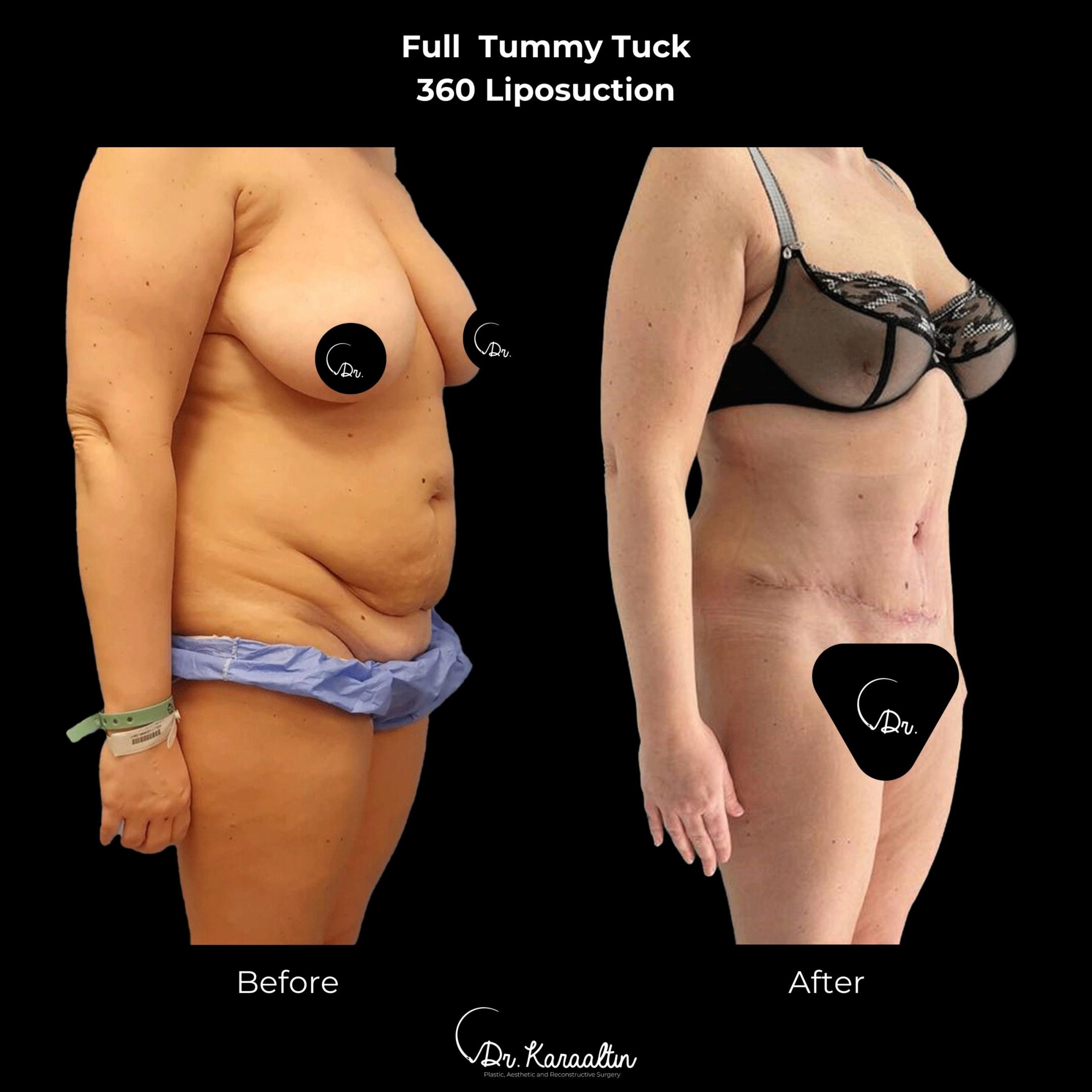It’s Time to Tighten Your Tummy
Comprehensive Abdominoplasty (Tummy Tuck) by Dr. Karaaltin
Tummy tuck surgery, or abdominoplasty, remains one of the most effective and transformative body contouring procedures worldwide. Whether following weight loss, pregnancy, or natural aging, abdominoplasty can help you reclaim a firm, sculpted midsection.
Led by internationally renowned plastic and reconstructive surgeon Prof. Dr. Karaaltin, our approach incorporates anatomical precision, surgical innovation, and advanced postoperative care to deliver exceptional aesthetic results with long-term satisfaction.
What Is a Tummy Tuck?
An abdominoplasty surgically removes excess abdominal skin and fat and tightens weakened or separated muscles. Unlike liposuction alone, it addresses both skin laxity and muscle diastasis (rectus separation), restoring the appearance of a toned, youthful abdomen.
Anatomical Basis:
- “Pinchable” fat: Subcutaneous fat that lies above the abdominal wall.
- Visceral fat: Deeper fat inside the abdomen that cannot be surgically removed.
- Linea alba: A midline tendon that can widen during pregnancy or weight gain, causing diastasis recti, which is repaired during the procedure.
Types of Abdominoplasty
1-Full Abdominoplasty
Indicated for patients with significant excess skin and muscle separation. The belly button is repositioned, and the abdominal muscles are tightened with permanent or long-acting absorbable sutures.
2-Mini Abdominoplasty
Ideal for lower abdominal skin laxity. A shorter incision is made, and the navel remains untouched. May be combined with liposuction for hourglass shaping.
3-Skin-Only Abdominoplasty
Performed for patients without muscle weakness. Only the skin is excised, often complemented with liposuction of the flanks and abdomen.
4-Free-Float Umbilical Technique
Allows the belly button to “float” to a new position without detaching the skin around it externally—ideal for moderate skin laxity above the navel.
5-Fleur-de-Lis Abdominoplasty
For patients with extreme weight loss. Removes excess skin in both vertical and horizontal axes, resulting in a T-shaped scar.
6-Apronectomy
For those with a large overhanging apron of skin and fat. Removes tissue without muscle repair, leaving a long horizontal scar.
7-Lipoabdominoplasty (LABP)
Combines traditional abdominoplasty with liposuction. Liposuction thins the fat layer while preserving vital structures, enhancing contour and reducing complication risk.
8-High Lateral Tension Abdominoplasty
Emphasizes lateral tightening and uses advanced flap fixation and strategic liposuction to enhance the waistline and upper abdomen.
Your Surgical Journey with Dr. Karaaltin
- Consultation: Comprehensive evaluation of anatomy, medical history, and aesthetic goals.
- Digital Assessment: Secure submission of photographs for remote planning if necessary.
- Preoperative Planning: Precise incision mapping and determination of procedures to be combined.
- Surgery Day: Performed under general (or in some cases, epidural) anesthesia, lasting 2–5 hours depending on complexity.
- Postoperative Care: Includes garment fitting, wound care, drain management, and follow-up visits.
Advanced Techniques by Dr. Karaaltin
- Trans-Rectal Sheath Catheter
An innovative pain management solution involving a catheter beneath the rectus sheath connected to a controlled anesthesia pump—reducing opioid use and enhancing recovery.
- Vibrasat® Pro Liposuction
With over 1,000 successful cases, Dr. Karaaltin utilizes Möller’s Vibrasat Pro for refined body sculpting. This vibration-assisted technology emulsifies fat while promoting skin tightening and defining the abdominal contours naturally.
Recovery Timeline
- Hospital stay: 1–2 days for full abdominoplasty.
- Drains: Removed within 5–7 days post-op.
- Initial mobility: Patients walk bent forward for the first 5–7 days.
- Return to work: In 10–21 days, depending on the procedure.
- Heavy lifting: Avoided for at least 6 weeks.
Who is a Good Candidate?
- Stable weight with BMI ideally under 30 (higher BMI may require staged planning)
- No significant visceral fat burden
- Muscle separation or skin laxity after pregnancy or weight loss
- Nonsmoker or willing to stop pre-op and post-op to reduce complications
Understanding BMI and Body Types
- Endomorphs: More prone to visceral fat. May need BMI reduction before surgery.
- Mesomorphs: Muscular, ideal candidates for definition procedures.
- Ectomorphs: Leaner frame, may not require fat reduction.
Tools Used to Measure Success
BODY-Q Questionnaire
A validated patient-reported outcome tool assessing body image, satisfaction, and quality of life following body contouring procedures.
Scars: What to Expect
- Mini Tuck: Short, low scar (similar to C-section).
- Full Tuck: Hip-to-hip scar, well hidden in lingerie line, plus a hidden belly button scar.
- Fleur-de-Lis: Additional vertical scar for extensive excess skin removal.








